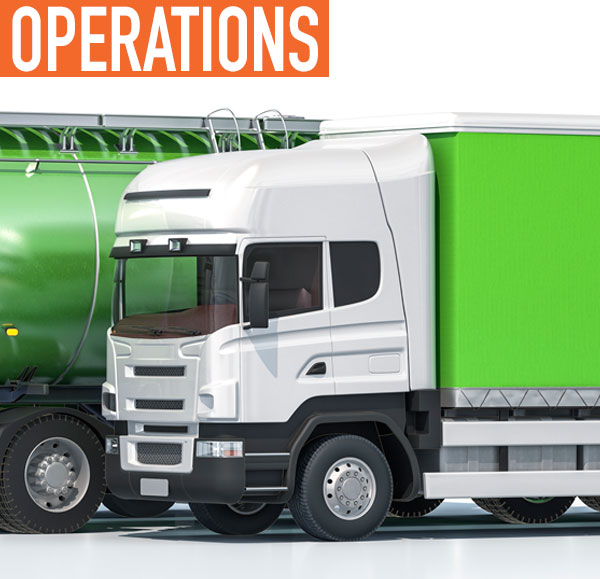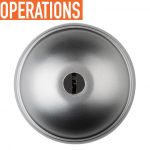In January and February, we discussed the factors to consider when integrating alternative energy/advanced technologies in your fleet. In our last installment of the Green Truck Association’s white paper, we discuss the different kinds of alternative energies and advanced technologies to consider for your fleet.
ELECTRIC DRIVE VEHICLES
An electric drive vehicle (EV) can be defined as an alternative fuel automobile that uses electric motors and motor controllers for propulsions in place of more common propulsion methods, such as an internal combustion engine (ICE). EVs receive power from a wide range of sources including fossil fuels, nuclear power, and renewable sources (tidal, solar, and wind power). This energy is transmitted to the vehicle through use of overhead lines, wireless energy transfer (inductive charging), or a direct connection through an electrical cable. Electricity may then be stored on the vehicle using a battery, flywheel, supercapacitor, or fuel cell.
BEV
A battery electric vehicle (BEV) uses chemical energy stored in rechargeable battery packs, superconductors, or fuel cells. A common component on BEVs is the regenerative braking system, which allows the battery to receive the benefit of converted kinetic energy from the vehicle motion as it slows, returning some energy to the storage device. An electric motor provides power to the wheels, a generator, or both. An energy storage device is included.
HEV
A hybrid electric vehicle (HEV) is powered by ICE or other propulsion sources that can run on conventional or alternative fuel in combination with an electric motor using energy stored in a battery. Like a BEV, other common components of an HEV is the regenerative braking system and an energy storage device such as a superconductor or battery. An HEV also includes a fuel tank that provides storage that ICE depends on for combustion.
PHEV
A plug-in hybrid electric vehicle (PHEV) combines a gasoline or diesel engine with an electric motor and a large, rechargeable battery. Unlike conventional hybrids, PHEVs typically have larger stored energy sources and can be plugged in and recharged from an outlet, allowing them to drive extended distances using only electricity. PHEVs also use a regenerative braking system, an electric motor, an energy storage device, and a fuel tank.
NATURAL GAS
Natural gas normally consists of more than 90% methane with smaller amounts of other trace gases. The substantial methane content gives natural gas its high-octane rating (120-130) and clean-burning characteristics, allowing high engine efficiency and low emissions. Natural gas does not require refinement before use in transportation, contributing to its lower pump price. Natural gas also has safety advantages: It is lighter than air (it would dissipate into the air instead of pooling on the ground in the event of a leak) and has a very limited range of flammability.

Compared to diesel, natural gas has 27% lower carbon dioxide emissions, 15 to 23% lower greenhouse gas emissions, and 90% lower NOx emissions with new natural gas engines on the market.
Renewable natural gas offers even more greenhouse gas benefits than conventional natural gas. It is biogas or biomethane captured as organic waste breaks down above the earth’s surface. This fuel is extremely clean and a low-carbon alternative harnessed directly from decaying food waste, waste water, agricultural waste, and landfill gas. Depending on the source, renewable natural gas provides greenhouse gas emission benefits of more than 100%.
Infrastructure
Natural gas stations provide fuel as either CNG or LNG. CNG stations use pipeline gas from the local utility and compress it onsite. LNG stations typically rely on off-site production at dedicated liquefaction facilities, and the fuel is transported and stored for use at the station. CNG and LNG stations employ different components and technologies that necessitate designs and builds particular to the fuel being dispensed.
CNG is used on all vehicle classes, while LNG is typically just engaged on high-mileage, high fuel-use vehicles. Today’s CNG station network supports local vehicle operation and regional trucking in many parts of the country.
When it comes to CNG infrastructure, there are two types: time-fill and fast-fill. Time-fill is typically used for return-to-base fleets that have the ability to refuel overnight. This type of fueling costs less than fast-fill due to the amount of compression necessary. Drivers fueling at a fast-fill station will experience similar fill times to gasoline and diesel. Fast-fill stations will often cost more than time-fill stations due to compression equipment and storage capacity.
Vehicles
Natural gas is used as a motor fuel for approximately 170,000 vehicles in the US and 25 million worldwide. As with all vehicle fuels, natural gas can be used safely if simple, common sense procedures are followed.
Natural gas-powered vehicles are designed for safety in normal operation and accidents. Their fuel containers must meet rigorous requirements, including bonfire/bullet penetration tests and hydraulic burst. These assessments are part of industry standards to test CNG containers far beyond normal environmental and service damage risks. Technical data, safety regulations, and years of experience show natural gas vehicles are at least as safe as conventionally fueled vehicles.
PROPANE
Also known as liquefied petroleum gas (LPG) or propane autogas, propane is a cleaner-burning alternative fuel that’s been used for decades to power light-, medium-, and heavy-duty propane vehicles.
Propane is a three-carbon alkane gas. It is stored under pressure inside a tank, and as pressure is released, the liquid propane vaporizes and turns into gas that is used in combustion.
Propane has a high-octane rating, making it an excellent choice for spark-ignited internal combustion engines. It presents no threat to soil, surface water, or groundwater. Propane is produced as a byproduct of natural gas processing and crude oil refining. It accounts for about 2% of the energy used in the US. Of this, less than 2% is used for transportation.
Fuel
Propane is stored onboard a vehicle in a tank pressurized to about 150 lbs per square inch, which is about twice the pressure of an inflated truck tire. Under this pressure, propane becomes a liquid with an energy density 270 times greater than its gaseous form. Propane has a higher octane rating than gasoline, so it can be used with higher engine compression ratios and prevents engine knocking. However, it has a lower British thermal unit rating than gasoline, so it takes more fuel by volume to drive the same distance.
Refueling
The two most common propane autogas refueling options involve installing a private on-site refueling station or becoming part of a refueling network, which could be public or private.
On-site propane autogas refueling stations are the most affordable to install and provide convenience and reduced downtime for fleets with a central refueling location. On-site propane autogas infrastructure uses the same pump and motor to handle a number of tanks and dispensers without changing the electrical requirements, allowing infrastructure to grow as fleets expand. Some propane autogas providers will install an on-site propane autogas refueling station in exchange for a fuel contract.
Public refueling networks work well for fleets with limited space or fleets needing more refueling locations along their routes. Public refueling networks are made up of existing stations owned and operated by the propane provider, and fleets can take advantage of these stations with no infrastructure investment. Public network refueling stations are accessible 24/7.
Installing a private refueling network made up of multiple refueling stations works well for large fleets in need of more refueling locations along their routes or fleets with considerable service areas. Private refueling networks provide fleets with the ability to tailor the complexity of the refueling stations and their locations based on the fleet’s specific needs. Private network refueling stations are accessible 24/7.
WEIGH OPTIONS
Now that you know more about alternative fuels and the factors to consider when integrating alternative energy into your fleet, you can more easily make a decision on whether it’s a good move for your business. It isn’t cheap to convert your fleet, but for some, money spent converting a fleet could end up saving thousands—not to mention the positive effect on the environment.
FOR MORE INFORMATION
The Green Truck Association (GTA) is an affiliate division of NTEA with the goal to continue the progression of green work trucks. The information from this article was adapted from GTA’s white paper, “Sustainable technology integration: Exploring alternative energy solutions.” Find out more, visit www.greentruckassociation.com.
MODERN WORKTRUCK SOLUTIONS: MARCH 2019 ISSUE
Did you enjoy this article?
Subscribe to the FREE Digital Edition of Modern WorkTruck Solutions magazine.





